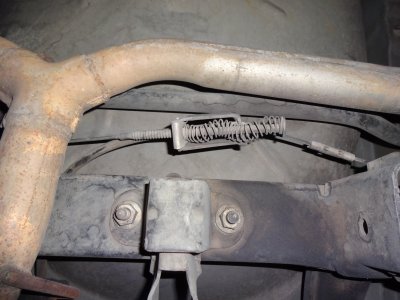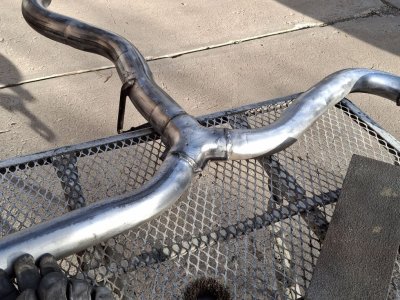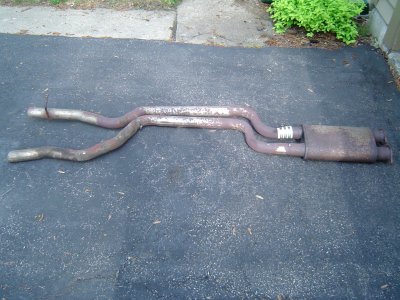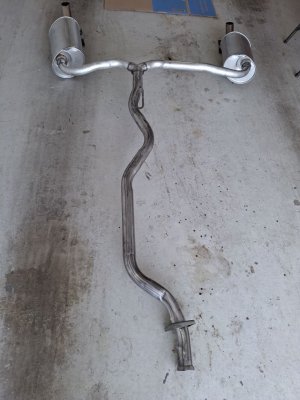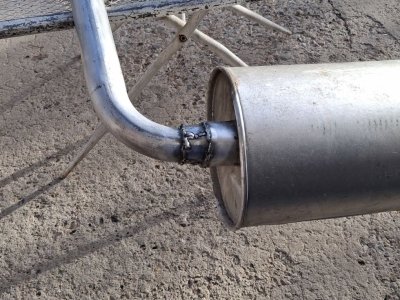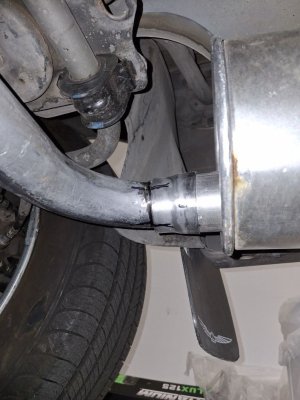That wire is OK but not ideal if corrosion resistance was a concern, that and a shielding gas.
Fire Extinguisher .. you probably won't need it as long as you clear the area of combustibles but you should have one on standby.
Your adapter piece still has a wide gap .. as long as your tacks hold, you should be able to make a couple very small relief cuts or pre-cut it before you tack so you can hammer the sleeve flat against the factory exhaust pipe.
.030 wire is best for what you are doing. I'd rather use .025 wire if its on exterior body work and .035 for thicker structural metal like frame / mounting.
..
In welding class for trade school we used to lay down beads on flat metal plate .. hundreds of feet of rows before we started practicing on pipe. Don't get too caught up on "laying dimes" .. every welder has a technique and the whole purpose of practice is to develop muscle memory. Some welders like to zig zag, make circles, figure 8s, etc .. some welders need a beer or two to steady their hand, or use their shaky hand to advantage. The only guidelines we get in the field are weld symbols on a drawing indicating bead thickness or stitch length / spacing.
On that note - the job i finished at the science building involved 3 different weld processes.
Structural / pipe ( carbon steel ) was arc weld with 6010 and / or 7018 rod,
Refrigeration ( copper pipe ) was braze welded with Acetylene torch and silver / copper brazing Rod with Nitrogen purge inside the pipe.
Fume hood extractors ( stainless sheet metal) was done by MIG, stainless .030 wire and a tri-mix shielding gas ( helium, argon and co2 ) .. not cheap, by far the most expensive welds per foot.


